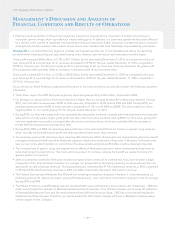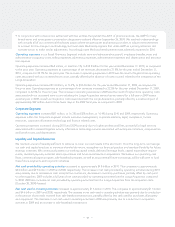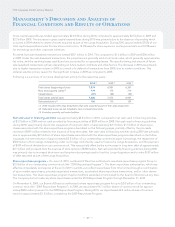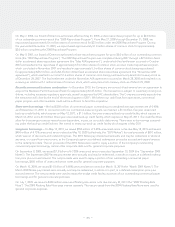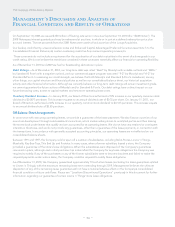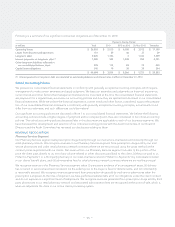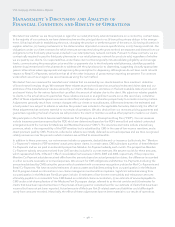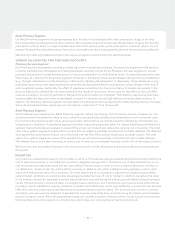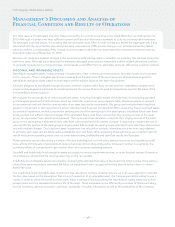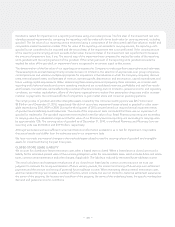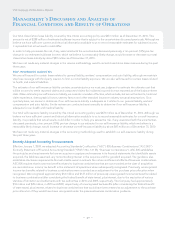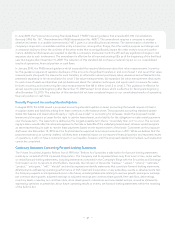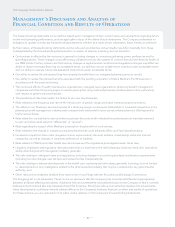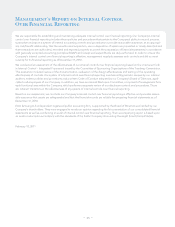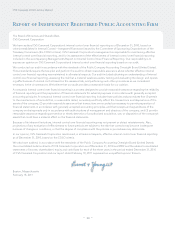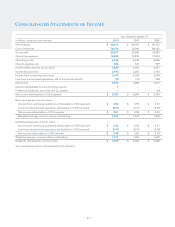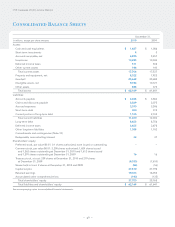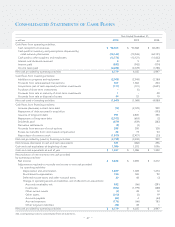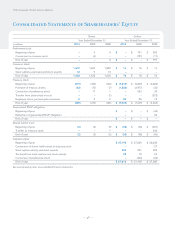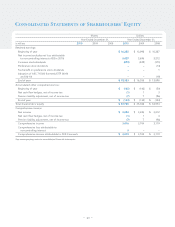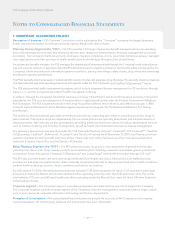CVS 2010 Annual Report Download - page 44
Download and view the complete annual report
Please find page 44 of the 2010 CVS annual report below. You can navigate through the pages in the report by either clicking on the pages listed below, or by using the keyword search tool below to find specific information within the annual report.
Management’s Discussion and Analysis of
Financial Condition and Results of Operations
Our total closed store lease liability covered by this critical accounting policy was $451 million as of December 31, 2010. This
amount is net of $288 million of estimated sublease income that is subject to the uncertainties discussed previously. Although we
believe we have sufficient current and historical information available to us to record reasonable estimates for sublease income,
it is possible that actual results could differ.
In order to help you assess the risk, if any, associated with the uncertainties discussed previously, a ten percent (10%) pre-tax
change in our estimated sublease income, which we believe is a reasonably likely change, would increase or decrease our total
closed store lease liability by about $29 million as of December 31, 2010.
We have not made any material changes in the reserve methodology used to record closed store lease reserves during the past
three years.
SELF-INSURANCE LIABILITIES
We are self-insured for certain losses related to general liability, workers’ compensation and auto liability, although we maintain
stop loss coverage with third party insurers to limit our total liability exposure. We are also self-insured for certain losses related
to health and medical liabilities.
The estimate of our self-insurance liability contains uncertainty since we must use judgment to estimate the ultimate cost that
will be incurred to settle reported claims and unreported claims for incidents incurred but not reported as of the balance sheet
date. When estimating our self-insurance liability, we consider a number of factors, which include, but are not limited to, historical
claim experience, demographic factors, severity factors and other standard insurance industry actuarial assumptions. On a
quarterly basis, we review to determine if our self-insurance liability is adequate as it relates to our general liability, workers’
compensation and auto liability. Similar reviews are conducted semi-annually to determine if our self-insurance liability is
adequate for our health and medical liability.
Our total self-insurance liability covered by this critical accounting policy was $474 million as of December 31, 2010. Although we
believe we have sufficient current and historical information available to us to record reasonable estimates for our self-insurance
liability, it is possible that actual results could differ. In order to help you assess the risk, if any, associated with the uncertainties
discussed previously, a ten percent (10%) pre-tax change in our estimate for our self-insurance liability, which we believe is a
reasonably likely change, would increase or decrease our self-insurance liability by about $47 million as of December 31, 2010.
We have not made any material changes in the accounting methodology used to establish our self-insurance liability during
the past three years.
Recently Adopted Accounting Pronouncements
Effective January 1, 2009, we adopted Accounting Standards Codification (“ASC”) 805 Business Combinations (“ASC 805”)
(formerly Statement of Financial Accounting Standard (“SFAS”) No. 141 (R), “Business Combinations”). ASC 805 establishes
the principles and requirements for how an acquirer recognizes and measures in its financial statements the identifiable assets
acquired, the liabilities assumed, any noncontrolling interest in the acquiree and the goodwill acquired. The guidance also
establishes disclosure requirements that will enable users to evaluate the nature and financial effects of business combinations.
ASC 805 requires that income tax benefits related to business combinations that are not recorded at the date of acquisition
are recorded as an income tax benefit in the statement of operations when subsequently recognized. Previously, unrecognized
income tax benefits related to business combinations were recorded as an adjustment to the purchase price allocation when
recognized. We recognized approximately $34 million and $147 million of previously unrecognized income tax benefits related
to business combinations (after considering the federal benefit of state taxes), plus interest, due to the expiration of various
statutes of limitation and settlements with tax authorities in 2010 and 2009, respectively. The Company had approximately
$10 million and $20 million, in 2010 and 2009, respectively, of unrecognized tax benefits (after considering the federal benefit
of state taxes), plus interest, related to business combinations that would have been treated as an adjustment to the purchase
price allocation if they would have been recognized under the previous business combination guidance.
– 40 –
CVS Caremark 2010 Annual Report


